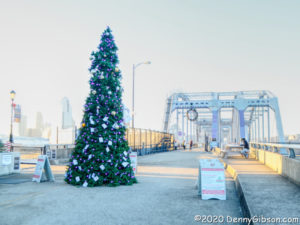 This isn’t the first year for a Christmas display on the Purple People Bridge but it is the first year I’ve taken notice. Maybe that’s because more people have been posting pictures of it on social media, or maybe it’s because I’m sitting at home paying more attention, or maybe it’s because the display has received a little more publicity because it almost didn’t happen. The privately owned bridge is normally home to a variety of fundraising events throughout the year but that was not the case in COVID-riddled 2020. There was simply no money in the budget of the nonprofit Newport Southbank Bridge Company for lighting the bridge this year, but local companies, led by realtor North American Properties, stepped in to assure that there would be lights. The 25-foot tree placed at the bridge’s south end by the Wish Tree Program is covered with gift suggestions for people in need.
This isn’t the first year for a Christmas display on the Purple People Bridge but it is the first year I’ve taken notice. Maybe that’s because more people have been posting pictures of it on social media, or maybe it’s because I’m sitting at home paying more attention, or maybe it’s because the display has received a little more publicity because it almost didn’t happen. The privately owned bridge is normally home to a variety of fundraising events throughout the year but that was not the case in COVID-riddled 2020. There was simply no money in the budget of the nonprofit Newport Southbank Bridge Company for lighting the bridge this year, but local companies, led by realtor North American Properties, stepped in to assure that there would be lights. The 25-foot tree placed at the bridge’s south end by the Wish Tree Program is covered with gift suggestions for people in need.

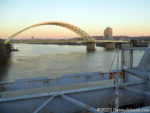
 I arrived at the Kentucky end of the bridge a little before sunset and walked across it to Ohio. Note that the state line is a lot closer to Ohio than it is to Kentucky. It is the low-water mark on the northern bank — as it existed in 1792. When “love locks”, closed by couples before tossing the keys in the river, became a problem around 2017, they were removed from the actual bridge and a special area designated. I presume that even the special area has to be cleaned up occasionally. The middle picture is of the Big Mac Bridge which carries I-471 and is officially named the Daniel Carter Beard Bridge. The supports in the foreground of that picture once carried railroad tracks. They can be better seen here. The third picture was taken from the Cincinnati access ramp looking back at the bridge.
I arrived at the Kentucky end of the bridge a little before sunset and walked across it to Ohio. Note that the state line is a lot closer to Ohio than it is to Kentucky. It is the low-water mark on the northern bank — as it existed in 1792. When “love locks”, closed by couples before tossing the keys in the river, became a problem around 2017, they were removed from the actual bridge and a special area designated. I presume that even the special area has to be cleaned up occasionally. The middle picture is of the Big Mac Bridge which carries I-471 and is officially named the Daniel Carter Beard Bridge. The supports in the foreground of that picture once carried railroad tracks. They can be better seen here. The third picture was taken from the Cincinnati access ramp looking back at the bridge.
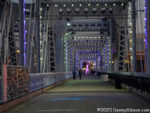
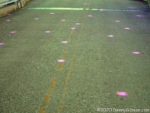 As the light faded, I headed back toward Kentucky. With the change in lighting, the people on the bridge also begin to change. It had been mostly people jogging or biking for exercise and workers on a foot-powered interstate commute. Now small groups, including some obvious families, began to appear to take in the lights.
As the light faded, I headed back toward Kentucky. With the change in lighting, the people on the bridge also begin to change. It had been mostly people jogging or biking for exercise and workers on a foot-powered interstate commute. Now small groups, including some obvious families, began to appear to take in the lights.
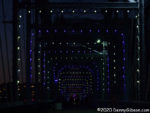

 When darkness came, the bridge began to take on that “infinity room” look I’d seen in pictures others had shared online. Somewhere near the middle, I leaned over the railing to grab a shot of the big tree in Newport.
When darkness came, the bridge began to take on that “infinity room” look I’d seen in pictures others had shared online. Somewhere near the middle, I leaned over the railing to grab a shot of the big tree in Newport.


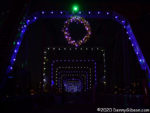 Back on the Kentucky shore, I stepped off to the side for a view of the city across the river before taking a parting shot of the Wish Tree and heading home. The display is free and it only cost me $3 to park in the garage next to the bridge. The lights will be lit each night through January 15.
Back on the Kentucky shore, I stepped off to the side for a view of the city across the river before taking a parting shot of the Wish Tree and heading home. The display is free and it only cost me $3 to park in the garage next to the bridge. The lights will be lit each night through January 15.
 What was originally called the Newport Cincinnati Bridge opened in 1872 as a railroad only bridge. Over the years, it was widened, had decks added, and for a long time served automobiles, trains, and pedestrians. It lost the trains in 1987, became a people bridge in 2001, and became purple in 2006. In addition to being painted purple, the bridge had stairs and railings added to allow people to walk along the top of its trusses for a fee. They’re still there.
What was originally called the Newport Cincinnati Bridge opened in 1872 as a railroad only bridge. Over the years, it was widened, had decks added, and for a long time served automobiles, trains, and pedestrians. It lost the trains in 1987, became a people bridge in 2001, and became purple in 2006. In addition to being painted purple, the bridge had stairs and railings added to allow people to walk along the top of its trusses for a fee. They’re still there.

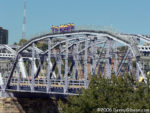
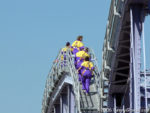 Sadly for the promoter, there usually wasn’t all that much to look at, and, even when there was, the improved view from a maximum of maybe 140 feet above the free-to-walk deck did not seem worth the fee which hovered in the $30-$40 range. These pictures were taken during Cincinnati’s last Tall Stacks Festival when the riverfront was full of boats. That gave climbers something to look at and the idea was new enough to seem attractive. I’m fairly certain those few days in October 2006 were the busiest ever for the climbing operation which closed less than a year later.
Sadly for the promoter, there usually wasn’t all that much to look at, and, even when there was, the improved view from a maximum of maybe 140 feet above the free-to-walk deck did not seem worth the fee which hovered in the $30-$40 range. These pictures were taken during Cincinnati’s last Tall Stacks Festival when the riverfront was full of boats. That gave climbers something to look at and the idea was new enough to seem attractive. I’m fairly certain those few days in October 2006 were the busiest ever for the climbing operation which closed less than a year later.

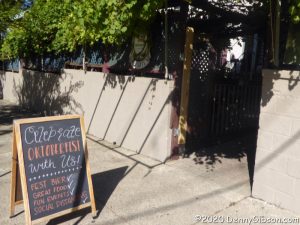
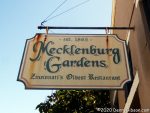
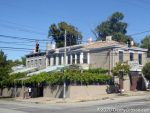
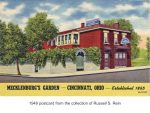
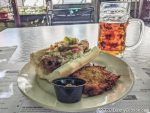

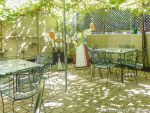

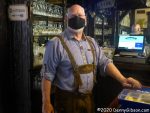

 This post first appeared last year. It is being reused due in part to 2020’s reduced mobility and (apparently) creativity. Articles in
This post first appeared last year. It is being reused due in part to 2020’s reduced mobility and (apparently) creativity. Articles in 
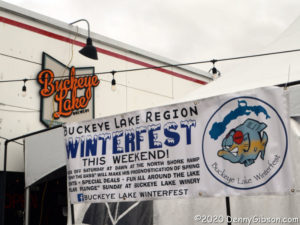

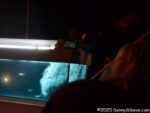
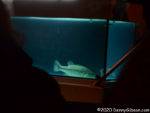
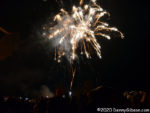
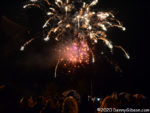
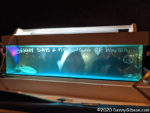


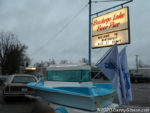


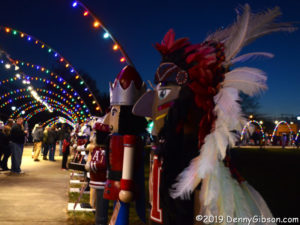
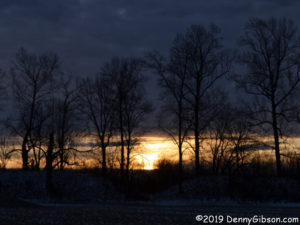
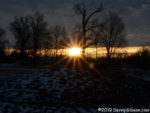
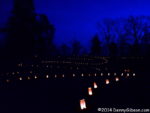
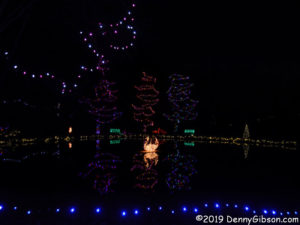
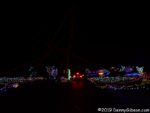
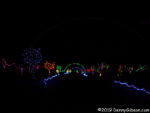


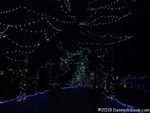
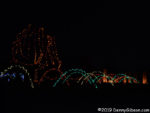
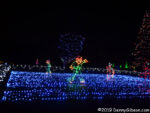

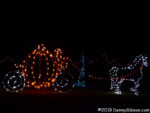
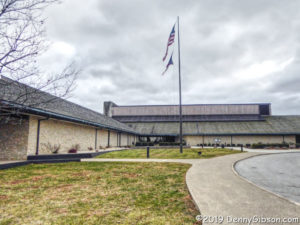


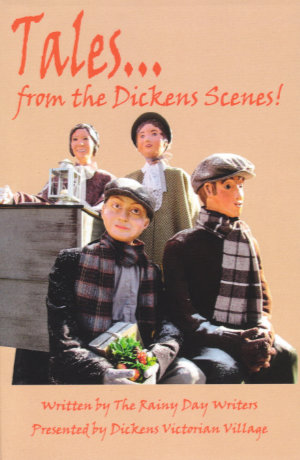 This book is unusual and unusually good. The Dickens Scenes of the title are those in Cambridge, Ohio, that starred in this blog’s most recent regular weekly post. There are currently 94 of those scenes and each began life as a sketch by a fellow named Bob Ley. Bob is one of a group of writers, known as
This book is unusual and unusually good. The Dickens Scenes of the title are those in Cambridge, Ohio, that starred in this blog’s most recent regular weekly post. There are currently 94 of those scenes and each began life as a sketch by a fellow named Bob Ley. Bob is one of a group of writers, known as 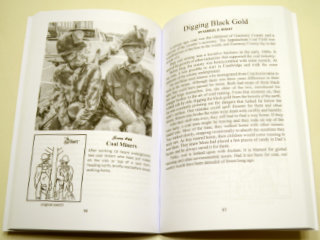 The individual photos are not credited but acknowledgments at the front of the book identify Tom Davey and Lindy Thaxton as the photographers. The photos are all quite good and do a nice job of capturing each scene from its best vantage point. Together, the book’s even-numbered (i.e., lefthand) pages make up the sort of catalog often prepared for a museum display. The village really is such a display with the sidewalks of Cambridge forming the museum.
The individual photos are not credited but acknowledgments at the front of the book identify Tom Davey and Lindy Thaxton as the photographers. The photos are all quite good and do a nice job of capturing each scene from its best vantage point. Together, the book’s even-numbered (i.e., lefthand) pages make up the sort of catalog often prepared for a museum display. The village really is such a display with the sidewalks of Cambridge forming the museum.